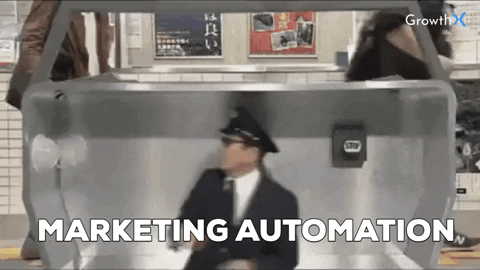5 Marketing Automation Techniques To Convert Leads
Marketing Automation Techniques
To gain the most value from your marketing automation efforts, you need to select your automation techniques wisely.
There are many ways to approach marketing automation, as with all marketing processes. The path you choose will determine your success or failure.
Fortunately, you don’t have to break new ground here. We’ve been in the marketing automation business for years and have identified five primary automation techniques that promise immediate impact. The five are;
Lead scoring
Lead scoring is a method used to rank prospects against a scale representing the perceived value of leads to an organisation.
You begin by defining your benchmarks, and after that, every lead is scored against those benchmarks. The scores will help your organisation prioritise leads. The most sales-ready leads can be assigned the highest priority, while non-sales-ready leads are given the lowest priority.
One of the most significant advantages of lead scoring is that it takes away the guesswork, giving you confidence in your leads. When you have faith in a lead, you can pursue that lead with incredible determination, increasing the chances of conversion.
Tag management
Approximately 87% of marketers believe that tag management is critical to digital marketing success. As the name suggests, tagging involves assigning a tag to each lead for ease of follow-up.
You can assign tags based on advertising source, type of contact, or other physiographic and demographic data. You can also tag leads based on the emails they click or the pages they visit on your website. Then, segment your contact list based on the tags. With this done, things like personalisation become easier, dramatically increasing your chances of conversion.
Split testing
For those who’ve never tried it, split testing is another excellent automation technique that will instantly boost your conversion rate. In split testing, you “split” your audience base into two groups (A and B) and serve each group with a variation of the same marketing messages.
For instance, you can create a slightly different version of your Google ads, then serve group A with the old ads and group B with the new variation. From there, monitor the click-through rate of each ad, and after a given period, say one week, identify the ad type with a higher conversion rate.
SMS texting
Many marketers are also turning to SMS marketing for a good reason. A quick check reveals that SMS texts are more effective than email and print media.
First off, SMS is faster. In most cases, the message is delivered instantly. Secondly, about 90% of consumers read text messages within 3 minutes of receiving them. However, with emails, most people check them 2-3 times every day. SMS texts also boast a 6-8 times higher engagement rate than email.
Cart abandonment follow-up
Finally, you can also significantly increase your conversions by following up on cart abandonment. Most marketers still don’t understand that many consumers abandon carts, not because they no longer want to purchase but because of technicalities. Perhaps the checkout process was too complicated. Or, it could have been a slow page download.
You never know. So, why not follow up? Why not find out why that consumer just left? And, if you discover that the reason for their going was something you can work on, fix it immediately. Just by doing that, you’ll have prevented future cases of cart abandonment.
If you can implement these tips, rest assured of an increase in conversions and an improvement in customer relationship and retention.
If you’d like assistance with your Marketing Automation, contact us today to see how we can assist you!
.png?width=50&height=50&name=Search%20(7).png)



